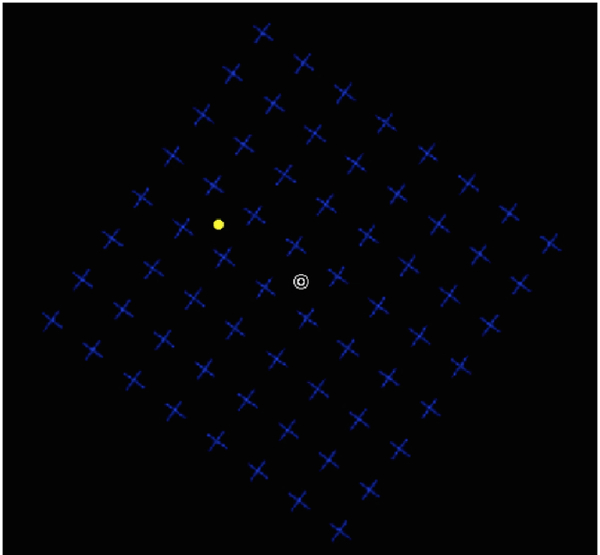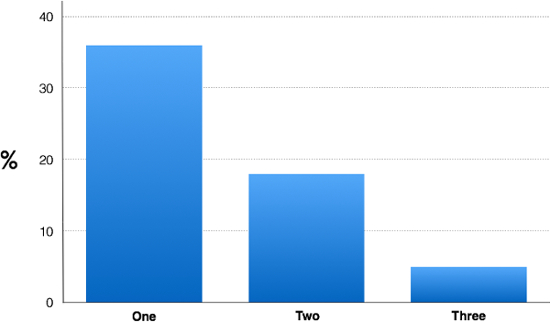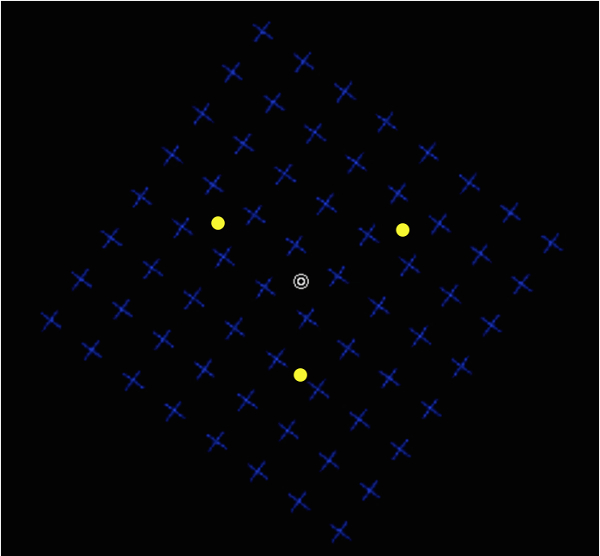运动诱导的失明
Overview
资料来源: 实验室的乔纳森 Flombaum — — 约翰 · 霍普金斯大学
一件事的视觉感知和感觉科学基本暴露后变得非常突出: 什么人看到的是大脑的一个创举。因此人们可能无法看到的东西,看东西不存在,或在一种扭曲的方式看到的东西。
为了区分现实和人们的感知,科学家使用期限意识指人们的感知。研究意识,视觉科学家经常依靠幻想误解,可以揭示大脑构造经验的方式。2001 年,一组研究人员发现了惊人的新幻想所谓运动诱导的失明已成为视觉意识研究的有力工具。1
该视频演示了典型的刺激和方法用来研究意识与运动诱导的失明。
Procedure
1.刺激
- 做运动诱导的失明实验需要软件或编程环境,可以使简单的动画和收集按键响应。
- 基本运动诱导的失明刺激涉及三个特点: 一个正方形组成的明亮的蓝色十字架在黑色的背景、 明亮的黄色光盘走向的一个广场上,所占用的空间角和白棋在要作为一个固定的点的屏幕的中心。图 1显示单个帧的基本运动诱导的失明刺激。
- 设置要在一个方向连续旋转的蓝色十字架广场仿佛广场木桩固定由一个固定的点。

图 1: 单个帧包含运动诱导的失明刺激。在动态的版本中,蓝色十字架广场绕旋转中心注视点,而黄点保持静止状态。
2.产生幻觉
- 体验的幻觉,注视白色光盘中心的刺激,但也参加到黄色光盘,当你看着蓝色
Results
Application and Summary
References
- Bonneh, Y. S., Cooperman, A., & Sagi, D. (2001). Motion-induced blindness in normal observers. Nature, 411(6839), 798-801.
- New, J. J., & Scholl, B. J. (2008). "Perceptual Scotomas" A Functional Account of Motion-Induced Blindness. Psychological Science, 19(7), 653-659.
跳至...
此集合中的视频:

Now Playing
运动诱导的失明
Sensation and Perception
7.0K Views

影象残留的颜色
Sensation and Perception
11.2K Views

找到你的盲点和感性充填在
Sensation and Perception
17.4K Views

感觉和知觉的观
Sensation and Perception
11.9K Views

橡胶手错觉
Sensation and Perception
18.6K Views

艾姆斯房间
Sensation and Perception
17.5K Views

不注意视盲
Sensation and Perception
13.4K Views

空间线索
Sensation and Perception
15.0K Views

注意瞬脱
Sensation and Perception
16.1K Views

拥挤
Sensation and Perception
5.8K Views

倒面效应
Sensation and Perception
15.7K Views

麦格克效应
Sensation and Perception
16.1K Views

只是明显的差异
Sensation and Perception
15.4K Views

查找知觉阈限的楼梯过程
Sensation and Perception
24.4K Views

对象替换掩蔽
Sensation and Perception
6.6K Views
版权所属 © 2025 MyJoVE 公司版权所有,本公司不涉及任何医疗业务和医疗服务。

